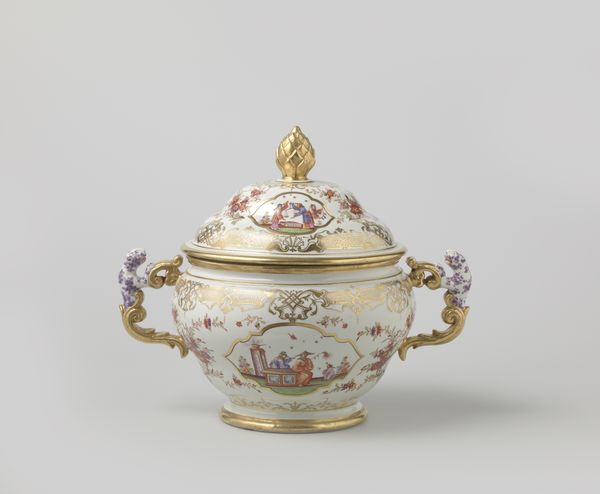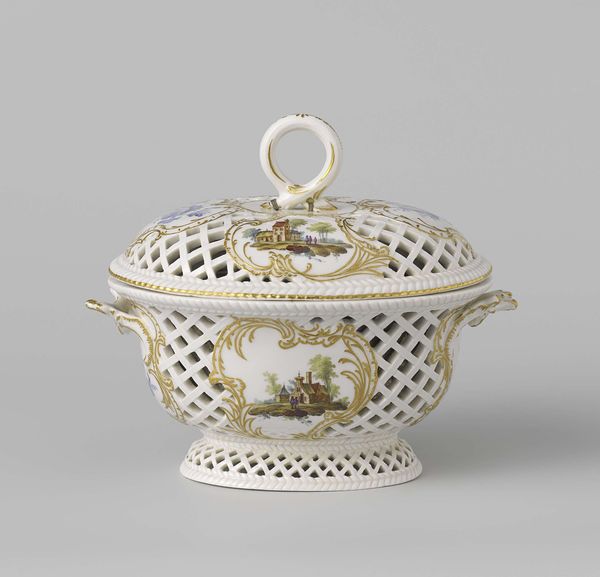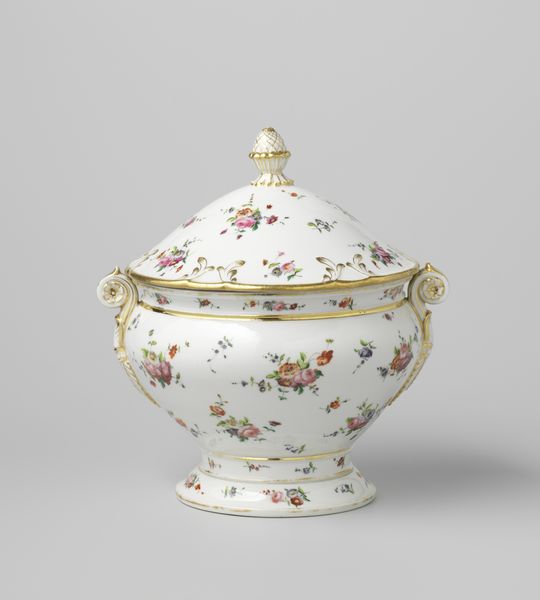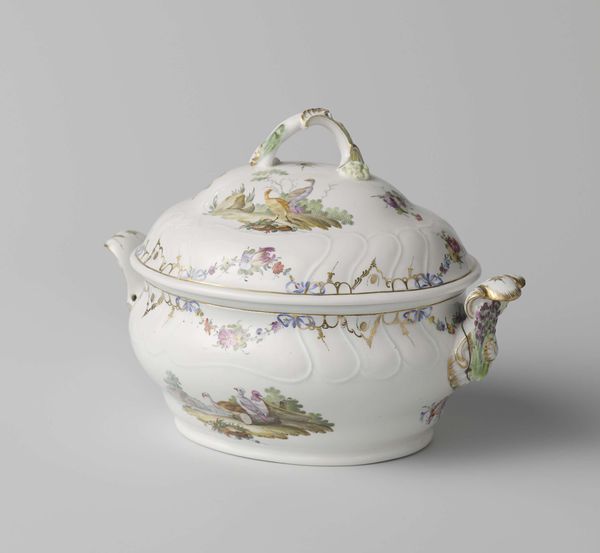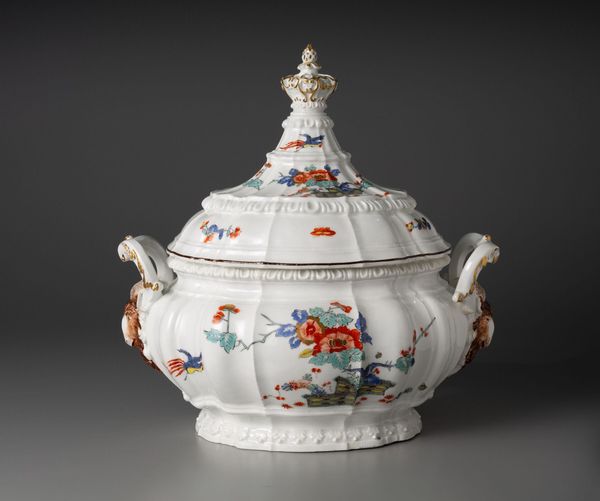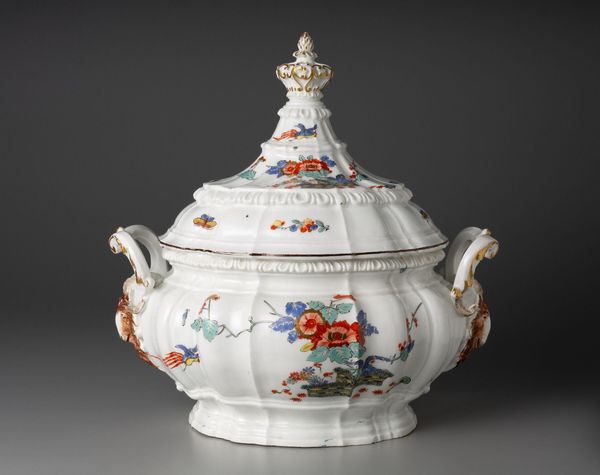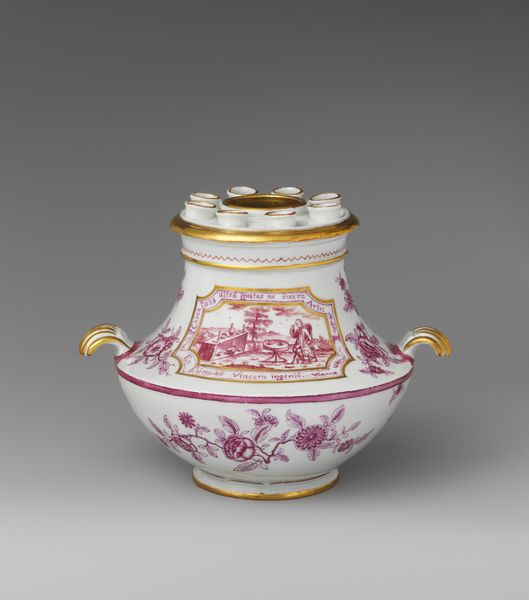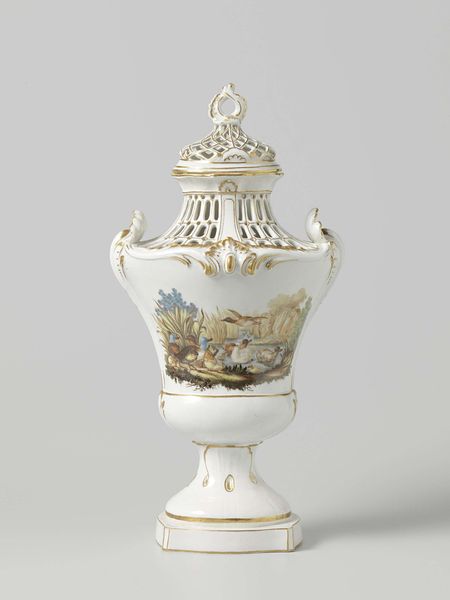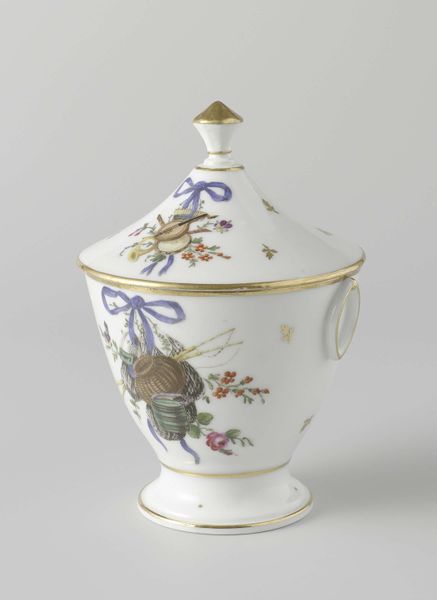
Suikervaas, beschilderd met een landschap met vee c. 1809 - 1814
0:00
0:00
ceramic, porcelain
#
product photograph merchandise
#
product studio photography
#
neoclacissism
#
product promotion photography
#
product fashion photography
#
landscape
#
ceramic
#
retro 'vintage design
#
porcelain
#
food illustration
#
product design photgrpaphy
#
metallic object render
#
graphic design product photography
#
genre-painting
#
product photography
Dimensions: height 8.5 cm, diameter 10 cm
Copyright: Rijks Museum: Open Domain
Editor: This is a porcelain sugar bowl made by the Koninklijke Porseleinfabriek Dommer & Co. between 1809 and 1814. The painted scenes feel like peering into a miniature, idealized countryside. What draws your eye to this piece? Curator: Oh, it whispers of simpler times, doesn’t it? For me, it's not just the picturesque landscape—the grazing cows, the figures idly chatting – it's the audacity of shrinking a whole world onto something so domestic. Makes you wonder about the owner. Did they gaze at it, yearning for rural escape as they stirred their tea? The artist has, ever so cleverly, positioned the animals to encourage the viewer to keep moving. A sort of invitation. Don't you think? Editor: Absolutely, the continuous landscape invites you to turn the bowl! Do you think the choice of subject also connects to a specific artistic trend of that era? Curator: Undoubtedly, the Neoclassical taste for idealized nature is very strong here. Think of it as a longing for a pre-industrial Arcadia, filtered through a Dutch lens. There’s a gentle irony, of course – the elite classes, indulging in such pastoral scenes whilst profiting from increasing urbanization. Tell me, what does it spark in you? A longing? A curiosity? A raised eyebrow perhaps? Editor: A bit of all three, actually! I never considered the subtle commentary of the rural scene in contrast to urban life, as you described. It gives a whole new perspective on what I initially thought was simply decorative. Curator: Exactly! Isn't it wonderful how a simple sugar bowl can contain so much history and cultural commentary? Makes you want to start a collection, doesn't it? Editor: Absolutely, I'll be on the lookout for more of these historical narratives!
Comments
No comments
Be the first to comment and join the conversation on the ultimate creative platform.

